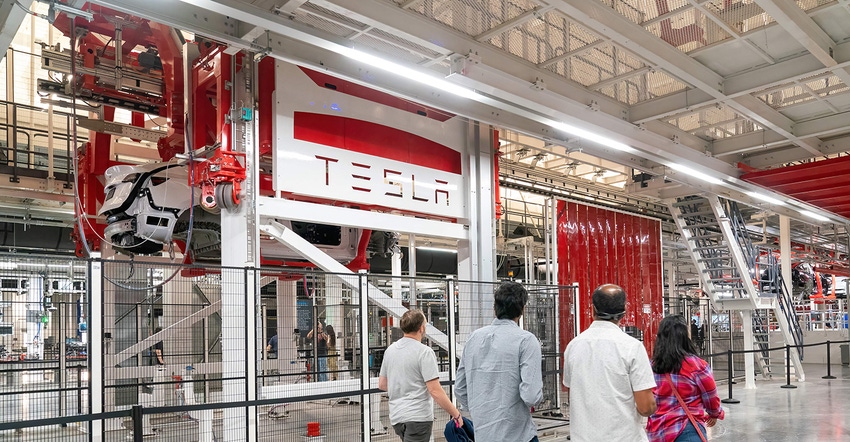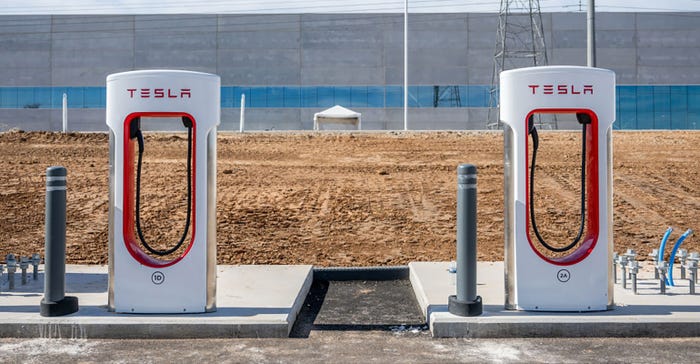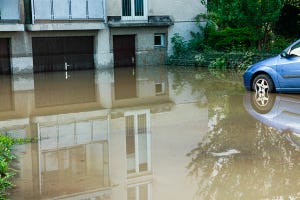Tesla CEO Elon Musk and Tesla’s leadership team talked about growing the battery storage business, plans for new gigafactory, the future of Tesla’s supply chain, and more at the company’s 2023 Investor Day.

Tesla held a presentation at its gigafactory in Texas where Elon Musk, Tesla’s CEO and more than a dozen of team leaders talked about milestones achieved and the future of Tesla . Here are eight takeaways from the Tesla Investor Day that are relevant to our readers:
1.Sustainable-energy Earth:
Clean energy and a sustainable global economy were discussed by Tesla’s CEO Elon Musk and Drew Baglino Tesla’s SVP, Powertrain and Energy Engineering. Musk made clear that he believes there is a path to a sustainable energy on Earth. “The path to a sustainable energy on Earth doesn't require destroying natural habitats. It doesn't require us to stop using electricity and sort of be in the cold or anything,” he said. “In fact, you could support a civilization much bigger than Earth, much more than 8B humans could actually be supported sustainably on Earth.”
They talked about the resources needed to support a sustainable energy economy, going into details about the possibilities of generating renewable wind and solar energy—and even how much global land area would be needed (2%, according to their calculation).
“I really wanted today to be not just about Tesla investors who own stock, but really about anyone who is an investor on Earth. The message of hope and optimism is based on actual physics and real calculations,” Musk concluded.
2.Vertical integration and scaling capabilities:
“Vertical integration” were the two words heard the most from every single Tesla team presentation. “To make a critical decision we can have the battery cell chemists, the mechanical engineers, the manufacturing engineers, the supply chain team, the automation designers, the software programmers all in one room, working together in real time. And that allows us to make decisions that are best for the whole car and to make them really fast” said Colin Campbell, VP, Powertrain Engineering.
“You've heard a lot of vertical integration here today. We're vertically integrated. We manufacture and engineer all our own charging equipment. We share components across our different product lines and on the supercharger side, we've also installed and operate all of our sites,” said Rebecca Tinucci, Head of Global Charging Infrastructure.
Scalability is in Tesla’s future for sure, and it does not necessarily mean bigger plants, investors were told. In fact, the next powertrain factory will be 50% smaller than the one Tesla already has in Austin, TX, even though it has the same capacity. Tesla will plan to build the same number of cars from a smaller factory.
3.Powertrain engineering:
The team said that they figured out a way to use 75% less silicon carbide (SiC) transistors without compromising the performance or the efficiency of the car. The team also mentioned that the new powertrain will be compatible with any battery chemistry, giving them great flexibility in battery sourcing and at the same time securing scalability of EV production.
“Since we launched Model 3 back in 2017, we continuously improve that powertrain and the factory that builds it. So the engine of the car is 20% lighter. For the same power, we use 25% less heavy rare earths than when we started,” said Campbell.
4.No rare earth elements in EV motors:
The next generation of permanent magnet motor will require no rare earth elements. Tesla claimed this change will lower the cost without compromising the performance or the efficiency of the motor.
5.Microprocessors for power electronics:
“Inside the charger of a Tesla, there are transistor packages and every electron that moves you down the road flows through one of these packages,” said Campbell. Tesla used to require four microprocessors, but now has developed its own custom microprocessor that it is purpose-built for high-power electronics, and it does the job of all four microprocessors at half the cost. “Power electronics are central not just to our cars. They're also central to our superchargers into our energy storage products,” emphasized Campbell.

6.Charging infrastructure:
According to Tesla, their charger points have the industry's lowest deployment costs; their costs are often 20% if not 70% lower than alternatives. One of the reason is that supercharger sites are pre-built. They are loaded into a truck and sent to the site, and then crane-lifted into position. This method saves 15% on deployment costs and superchargers sites can be installed in a matter of days.
Tesla has also been able to increase site utilization by 30% without risking site efficiency by using trip planner with real-time site information to route vehicles towards available sites and away from congested site.
Tesla just started opening their networks on a global basis—over 50% of Tesla’s superchargers in Europe are currently open to other electric vehicles, and Tesla has also opened in Asia Pacific with their first sites in Australia—and just recently, Tesla has begun to open their first 10 supercharger sites here in the US to other electric vehicles. Tinucci emphasized that Tesla will keep scaling up their charging infrastructure while always maintaining great charging experiences. “If you want to fully electrify a global fleet, all these vehicles have to have a great and reliable charging experience,” she said.

7.Supply chain for electronics and batteries:
Tesla has an extraordinarily complex supply chain that could go down to Tier 6 levels. They do not buy components off-shelve from suppliers. Tesla negotiates directly with Tier 2 suppliers (semiconductor components) and the supply chain team estimates that the semiconductor industry can grow appropriately to support Tesla’s needs. For example, if Tesla plans to build 20M EV every year by 2030, it will only need less than 5% of the market share of the global wafer capacity even if they plan to use less components for next generation cars.
8.Lithium refinery and cell production:
A new gigafactory will be built in Mexico, near Monterrey—the announcement was made by Musk during the Q&A period. “ We will continue to expand productions in all of our factories so that the gigafactory in Mexico will be supplemental to the output of all the other factories,” said Musk.
When Baglino spoke about manufacturing, he talked about the need of securing upstream materials for cell manufacturing. “The 50GWh/year-capacity Corpus Christi lithium refinery that we've already broken ground on here in Texas will start commissioning by the end of this year,” said Baglino. He also mentioned that Tesla is working on a 60GWh/year cathode facility, with a 10-month build time that will be commissioned next quarter.
The Investor Day presentation was filled with milestones achieved by every Tesla team since the launch of Model 3 as the company overcame challenges including the Covid-19 pandemic and chip shortage. Even though there was no unveil of Model 2, Tesla leadership made clear that they are working on the next-generation model car, while at the same time they want to scale globally.
About the Author(s)
You May Also Like





